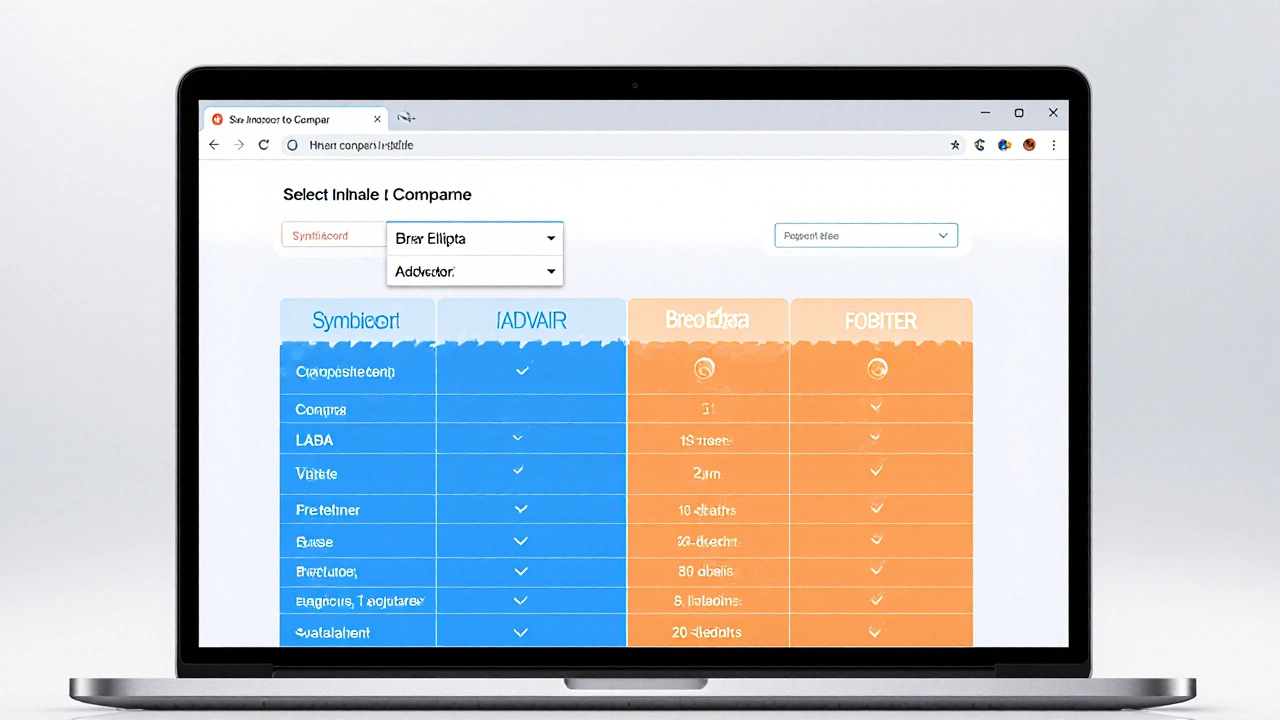Asthma Inhaler Comparison: Your Guide to Choosing the Right Device
When looking at asthma inhaler comparison, a side‑by‑side review of inhaler brands, designs, and medication blends used to treat asthma and COPD. Also known as inhaler review, it helps patients match a device to their breathing pattern, lifestyle, and prescription needs. Asthma inhaler comparison encompasses device performance, medication blend, and user technique, giving you a clear picture of what works best. Choosing the right inhaler requires understanding device type, because the way you breathe out or in can change how much medicine reaches your lungs. Medication formulation influences therapeutic efficacy, so a powder inhaler feels different from a metered‑dose spray. This intro will walk you through the most common options, what to watch for, and how to avoid common mistakes before you pick a device.
Key Players and How They Differ
One of the most talked‑about options is Symbicort Turbuhaler, a breath‑actuated powder inhaler that combines budesonide and formoterol for daily control. It delivers medication in a fine powder that only moves when you inhale forcefully, which many find easier than coordinating a click and a breath. Often compared with Advair Diskus, a disk‑type device delivering fluticasone and salmeterol, both devices illustrate how medication formulation influences lung deposition. The Diskus uses a rotating disk and a built‑in foil seal; you push a lever, then inhale, and the foil releases a set dose. While the two share the goal of long‑term control, the Turbuhaler’s dry‑powder format can be more forgiving if you have limited hand strength, whereas the Diskus may feel more consistent for users who prefer a tactile click. Both require regular cleaning, correct storage, and a check of the dose counter to avoid missed doses. Understanding the difference between a dry‑powder inhaler and a multidose inhaler is a core part of any asthma inhaler comparison because it determines how you handle the device daily.
For quick relief, many turn to a generic albuterol inhaler, a metered‑dose aerosol that opens airways within minutes. This rescue inhaler delivers a fine mist that you press and then breathe in, providing rapid bronchodilation during an attack. The key distinction from maintenance inhalers is timing: rescue inhalers are used as needed, while maintenance devices like Symbicort or Advair are taken daily to keep inflammation down. Proper technique matters—a missed breath or a weak puff can waste medicine and reduce benefit. Cost is another factor; generic albuterol tends to be cheaper than brand‑name versions, but price can vary by pharmacy and insurance coverage. When you compare a rescue inhaler with a maintenance inhaler, you’re really comparing two treatment strategies that work together: one for immediate relief, the other for long‑term control. Below you’ll discover a curated list of detailed comparison articles that break down each option, side effects, pricing, and real‑world tips for getting the most out of your inhaler.
Symbicort (Budesonide/Formoterol) vs. Top Inhaler Alternatives: A Detailed Comparison
A side‑by‑side look at Symbicort versus Advair, Breo Ellipta, Dulera and Fostair, covering dosing, efficacy, safety and how to pick the best inhaler for asthma or COPD.

